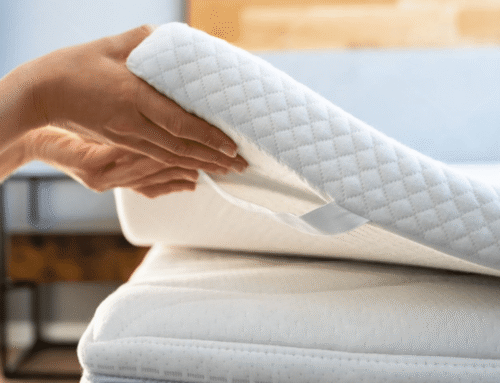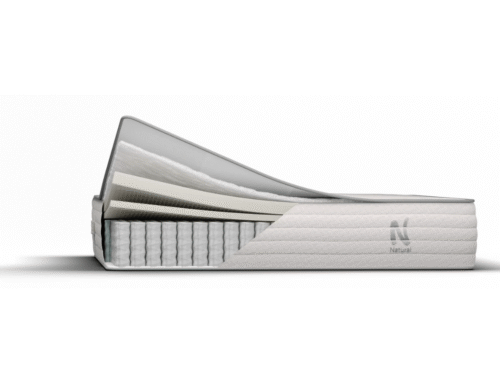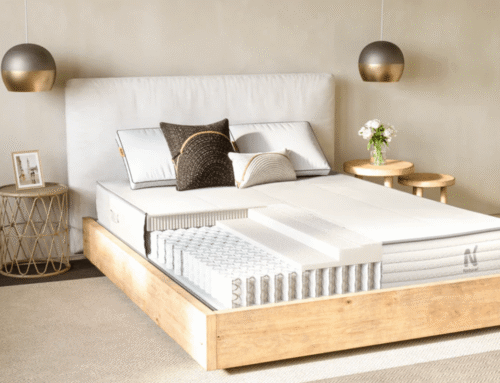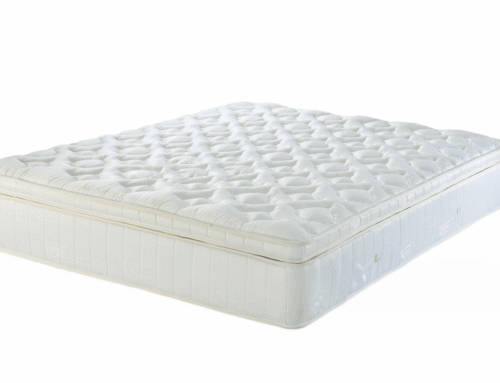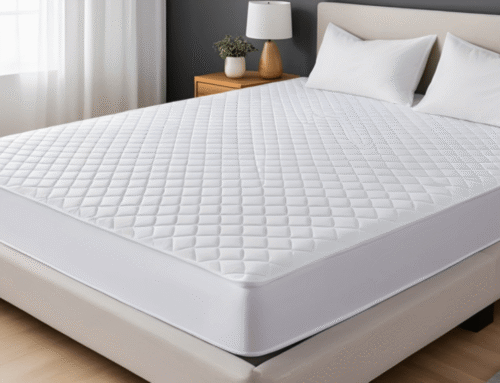Rotating a mattress doesn’t seem important right away, but anyone who has dealt with early sagging knows how much it matters. Innerspring mattresses have coils that can wear down unevenly when someone sleeps in the same spot every night. Over time, this causes dips that affect support and comfort, especially around the hips and shoulders.
To understand why rotation matters, it helps to know that innerspring mattresses have been around since the 1800s, built with metal coils that provide bounce and structure. Their lifespan can vary depending on usage and construction, but most last around 7–10 years with proper care.
Most people don’t notice the wear right away, but it builds up quietly. Sleeping on an unrotated mattress can lead to back pain, poor posture, or pressure points that weren’t there before. Some manufacturers suggest flipping the mattress, but many modern innersprings aren’t double-sided, so rotating every 3–6 months is a better move.
Most people forget about rotating the mattress, so doing it during seasonal changes makes it easier to remember. Turning it twice a year helps prevent uneven wear and keeps it more comfortable. Below, we’ll walk you through how to rotate it, what signs to check, and why it matters.
Key Takeaways
- Rotating innerspring mattresses every 3–6 months helps prevent sagging, extends their lifespan, and maintains consistent comfort across the entire sleep surface.
- Failing to rotate regularly may lead to dips, poor spinal alignment, and discomfort, especially around pressure points like the hips and shoulders.
- Zoned support mattresses often require specific rotation guidelines. Always check the label first to avoid misalignment that could trigger soreness or back pain.
- Align rotation with seasonal changes to make it easier to remember. Pair it with sheet changes or deep cleaning to create a simple and no-hassle routine.
- Even less-used beds, like kids’ or guest room mattresses, still benefit from rotation. Light use doesn’t mean you can skip basic care.
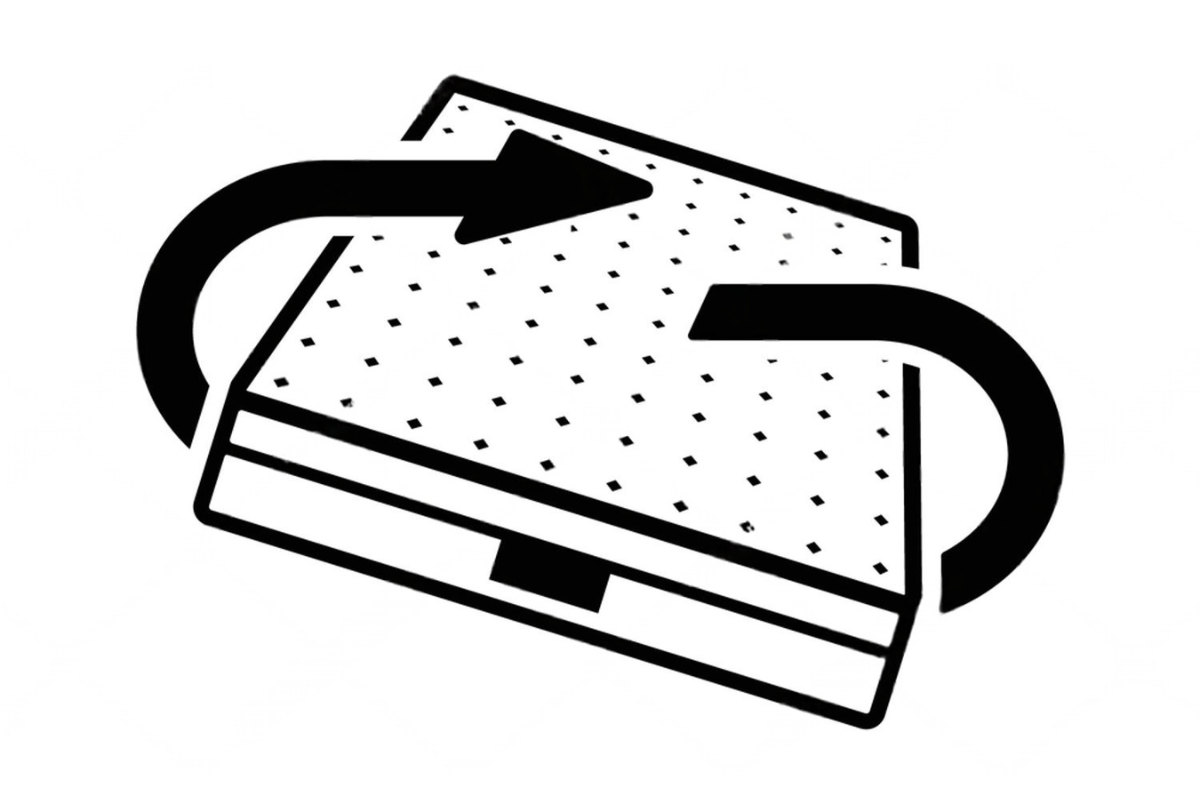
What Makes Innerspring Mattresses So Unique?
Innerspring mattresses rely on metal coils for support, which gives them that familiar bounce and firmness many people grew up with. Unlike foam beds that contour every inch, these offer a more lifted feel that’s especially noticeable around the hips and shoulders. That structure is great for people who want a sturdy surface without sinking too much.
The difference between innerspring and pocket coil mattresses lies in how the coils respond. Pocket coils are individually wrapped for better motion isolation, while traditional innersprings move as a unit and feel bouncier. Hybrid mattresses, on the other hand, combine coils with foam layers to balance pressure relief and support, though they may feel less breathable.
One common issue is sagging where the body naturally presses down night after night. Without regular rotation, the coils in those areas can lose tension quicker than the rest. Turning the mattress every few months helps even things out, which extends the life of the bed and keeps it more comfortable across the surface.
Innerspring models also differ by coil count and weight. Beds with more coils often provide better support, and since metal springs are dense, these mattresses are heavier than all-foam options. Compared to foam models, innerspring beds sleep cooler since air flows more freely through the open coil system. This helps reduce heat buildup, especially for those living in warmer climates or sharing the bed. Still, breathability can’t fix a mattress that’s past its prime. Once the springs wear out, support usually follows.
Should You Rotate a Mattress With Zoned Support?
Some innerspring mattresses now come with zoned support that feels firmer near the middle and softer near the top. This setup is meant to align the spine more naturally during sleep, especially for back and side sleepers. It’s helpful for those dealing with pressure points or discomfort in their lower back.
Before rotating a zoned mattress, the label or tag gives clues about whether the layout is symmetrical. Not all zoned mattresses can be turned around without affecting how they feel. Some brands design them to be used in just one direction to preserve support under specific body parts.
It’s better to double-check with the manufacturer or store before rotating anything. That way, people avoid tossing off the comfort balance and waking up with soreness. Zoned support works best when it stays aligned with the body’s shape, so turning the mattress without knowing could do more harm than good.
Pro Tips for Making Rotation Easy
- Mattress handles help with turning, though not meant for lifting. Grabbing each end and pivoting from the corners makes things smoother. It helps to have someone else assist, less strain, less awkward movement.
- Setting a reminder every 3 or 6 months keeps the routine consistent. Combining rotation with the start of spring or fall works well. Seasonal changes often trigger deeper home cleaning, so it’s easy to fit in.
- Vacuuming the surface before flipping helps reduce dust and allergens. Letting the mattress breathe for an hour improves freshness. This step is usually skipped but actually useful, especially in humid places.
- Switching sheets is a natural time to rotate the mattress. The bed’s already stripped down, so it feels like less effort. Doing this is better than overcomplicating the process.
- While at it, replacing old pillows helps too. Stiff necks and headaches sometimes come from worn-out support. Keeping pillows in check along with the mattress keeps the whole setup feeling fresh.
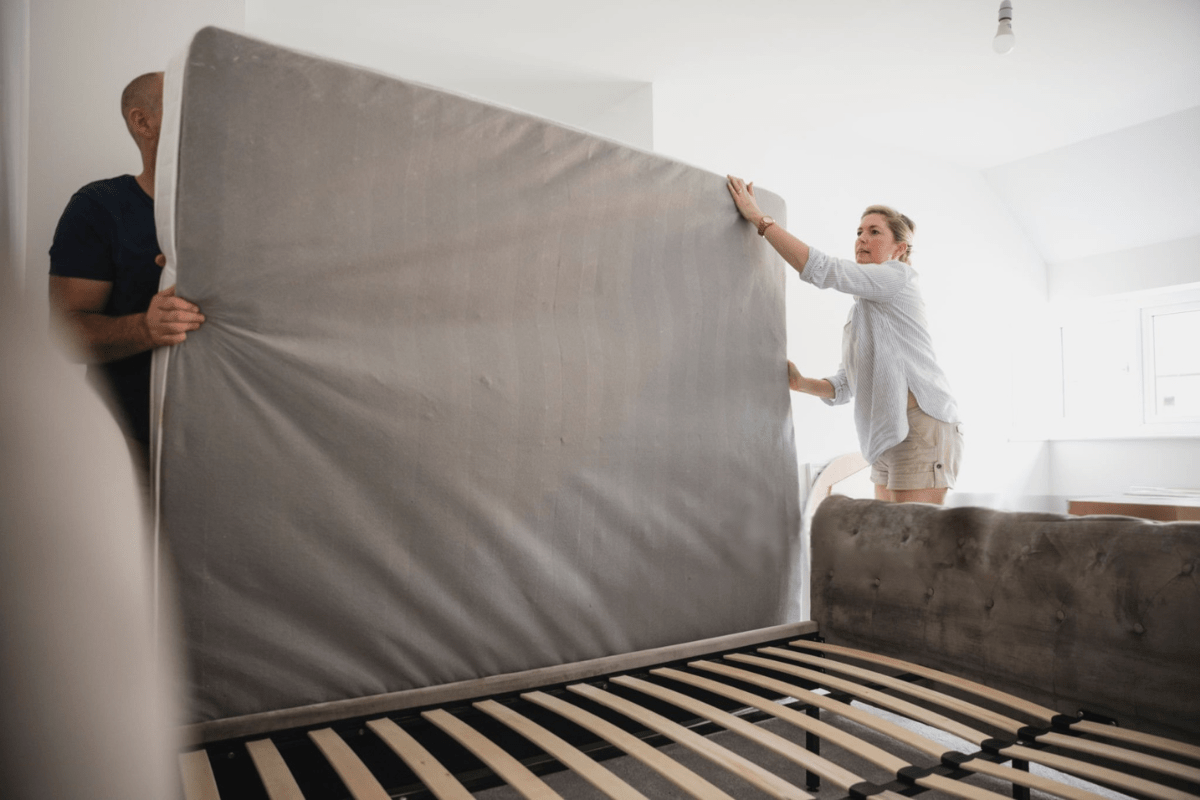
Does Rotation Work for All Mattress Types?
To get the most from your mattress, it’s important to pick the best innerspring mattress and what features to look for in other types. Rotating mattresses benefits innerspring mattresses and other mattresses to last longer. Memory foam mattresses should be rotated every 3 to 6 months to avoid uneven wear. Hybrid mattresses benefit from rotation, especially during the first year to keep their support.
Latex mattresses last longer and usually need rotation only twice a year. Pillow-top mattresses should be rotated but never flipped since the soft top can get damaged. Mattresses with two usable sides need both flipping and rotating to wear evenly.
Rotating helps stop lumps and sagging, so the mattress stays comfortable. Flipping applies only to two-sided mattresses, but rotation works for most. Keeping a rotation schedule helps maintain support and extends the mattress’s life.
Signs Your Mattress Needs to Be Rotated
A mattress usually needs rotation when a dip or dent shows where someone sleeps. This uneven spot can cause discomfort and make it hard to rest well. It happens because weight presses down in the same place for a long time.
Another sign is when the mattress feels firmer in some areas and softer in others. This difference can cause poor support and lead to aches in different parts of the body. Over time, the mattress loses its shape and comfort.
Waking up with new pains also points to a mattress that needs attention. A worn or sagging side can cause these problems. Rotating the mattress every few months helps keep it even and more comfortable to sleep on.
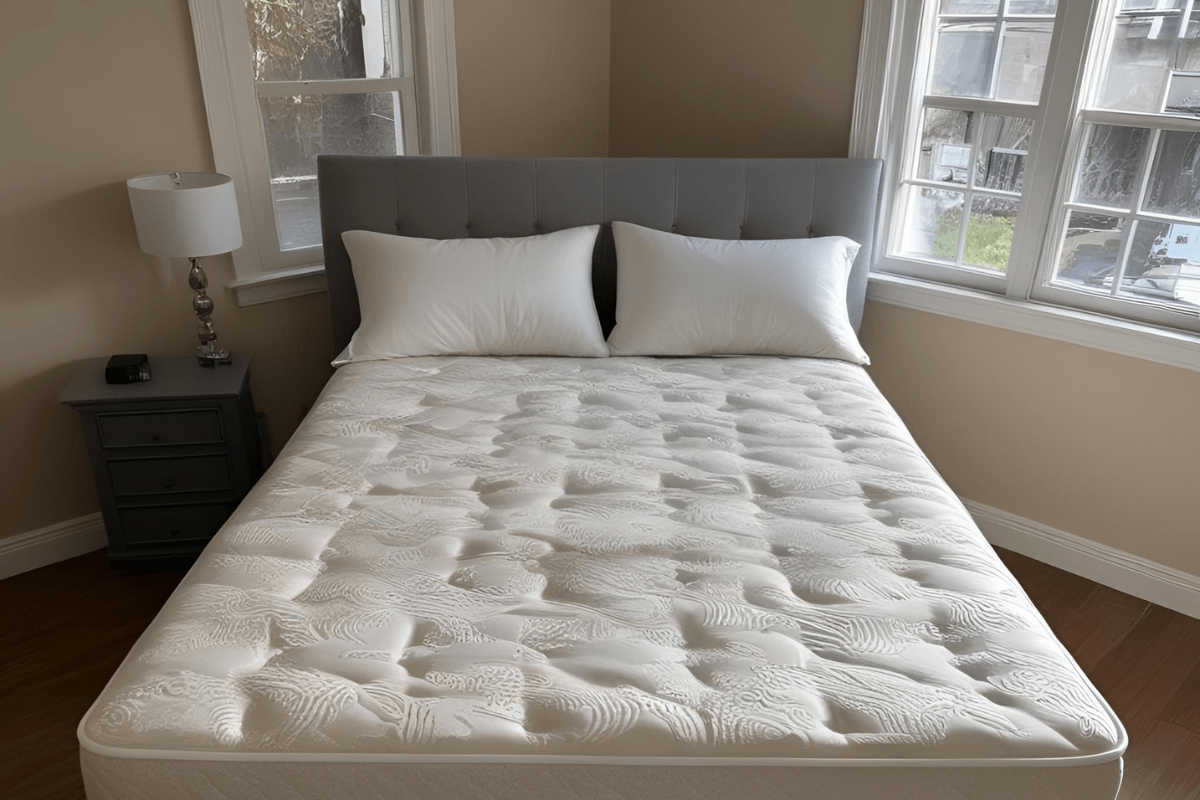
Should Kids’ or Guest Room Mattresses Be Rotated Too?
Rotating mattresses in kids’ or guest rooms is important in maintaining their shape and comfort over time. Even if a mattress doesn’t get nightly use, the materials inside still settle gradually, which can cause uneven wear if left alone for too long.
Guest room mattresses benefit from rotation about twice a year since they experience less frequent pressure, slowing down the breakdown of materials. For children’s mattresses, it’s better to rotate every 3 to 6 months because growing bodies need consistent support to keep their spine properly aligned.
Regular rotation helps extend the mattress’s lifespan by preventing sagging and indentations, regardless of how often it’s used. This simple step ensures that both guests and kids enjoy a more comfortable and supportive sleep surface for years.
Rotating vs. Flipping
Rotating mattresses in kids’ or guest rooms is important in maintaining their shape and comfort over time. Even if a mattress doesn’t get nightly use, the materials inside still settle gradually, which can cause uneven wear if left alone for too long.
Guest room mattresses benefit from rotation about twice a year since they experience less frequent pressure, slowing down the breakdown of materials. For children’s mattresses, it’s better to rotate every 3 to 6 months because growing bodies need consistent support to keep their spine properly aligned.
Regular rotation helps extend the mattress’s lifespan by preventing sagging and indentations, regardless of how often it’s used. This simple step ensures that both guests and kids enjoy a more comfortable and supportive sleep surface for years.
How to Rotate a Mattress
Rotating a mattress helps keep the surface even, especially for those with innerspring or hybrid types that tend to sag over time. Most people do this every 3 to 6 months to maintain consistent support. It’s not a complicated task, but handling a bulky mattress solo can be frustrating.
Start by removing everything from the bed, such as sheets, pillows, and blankets. Then, grab the foot of the mattress and turn it so that the end that used to be near the headboard now faces the foot of the bed. Try to keep the rotation as smooth as possible to avoid knocking things over or bending the mattress too much.
Once the mattress is fully turned, place it back down gently and make sure it’s centered on the frame. Some people prefer to check the corners to keep it aligned before remaking the bed. Having someone else nearby can help steady the mattress, especially for heavier models that shift around easily.
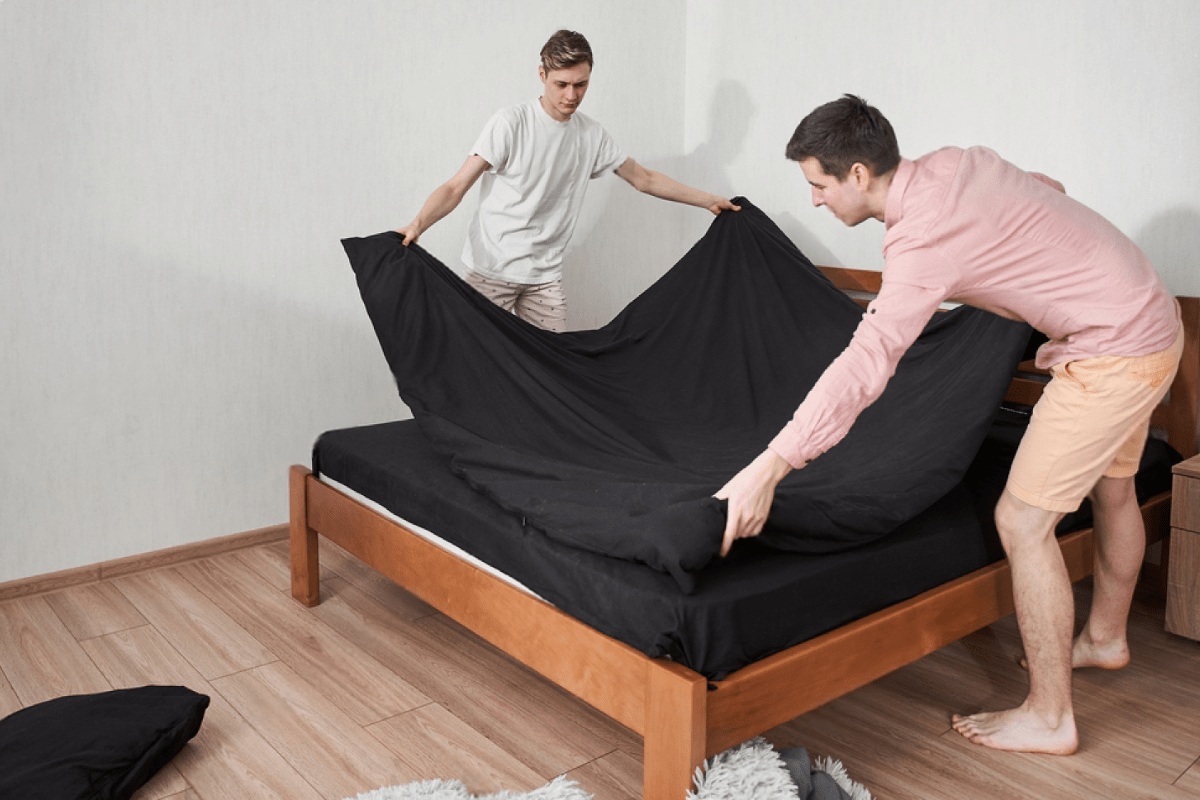
Can Rotating Help Extend Mattress Warranties?
Many people don’t realize that mattress warranties depend on proper care, including rotating the mattress regularly. Some brands actually require evidence of rotation before accepting claims for premature sagging or defects. Keeping a simple log or photos can prove helpful if a warranty issue arises.
Rotating a mattress isn’t just about following rules. It can also help distribute wear more evenly across the surface. This can slow down sagging and extend the mattress’s comfortable lifespan. Over time, this might delay the need to replace it, which is helpful for budgeting.
Although not every warranty explicitly demands rotation, treating a mattress with consistent care shows responsibility. It’s a small step that can protect an investment and potentially avoid hassle later. Ultimately, maintaining a mattress properly benefits both comfort and warranty coverage.
Final Thoughts
Rotating an innerspring mattress every three to six months can really help extend its life and keep sleep comfortable. It doesn’t require special tools or much time. This habit helps distribute wear evenly, which supports the back better and reduces the chance of waking up with aches.
A mattress that’s sagging or causing persistent tiredness might be beyond what rotation can fix, signaling it’s time for a replacement. Regular rotation isn’t a cure-all for worn-out mattresses, but it does delay the need to shop for a new one. Catching these signs early can save both money and discomfort in the long run.
For mattresses still in good shape, sticking to a rotation schedule keeps things comfortable and supportive longer. Setting a seasonal reminder is an easy way to stay on track. Consistency lead to many restful nights and protects the investment made in a quality bed.

